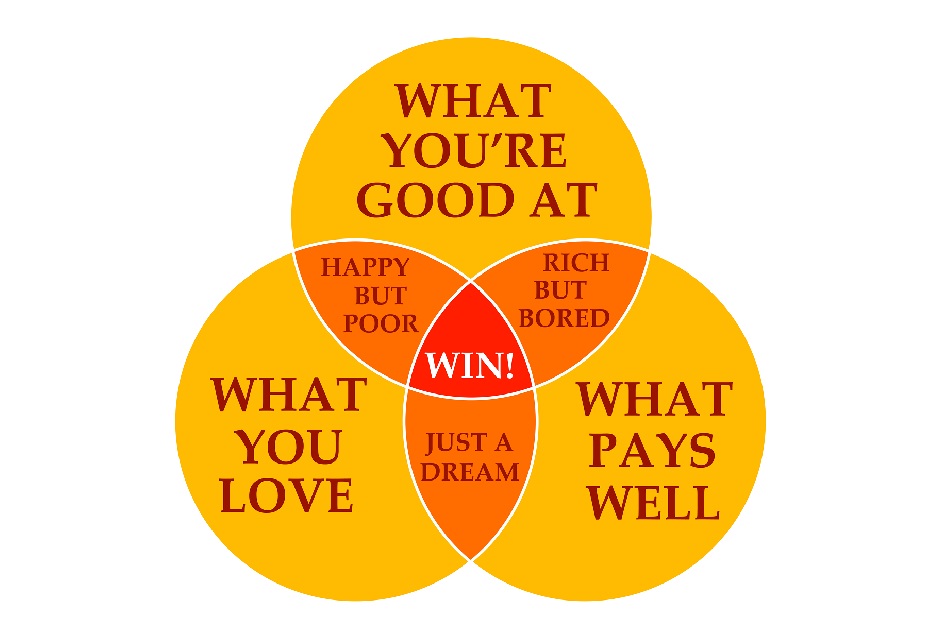Autonomy, mastery and purpose, versus carrot and sticks.
Rethink how we run our businesses.
Why Motivation Is Important
Motivation serves as a guiding force for all human behaviour. So, understanding how motivation works and the factors that may impact it can be important for several reasons.
Understanding motivation can:
- Increase your efficiency as you work toward your goals.
- Drive you to take action.
- Encourage you to engage in health-oriented behaviours.
- Help you avoid unhealthy or maladaptive behaviours, such as risk-taking and addiction.
- Help you feel more in control of your life.
- Improve your overall well-being and happiness.
There is a mismatch between what science knows and what business does. Here is what science knows:
– Those 20th century rewards, those motivators we think are a natural part of business, do work, but only in a surprisingly narrow band of circumstances.
– Those if-then rewards often destroy creativity.
– The secret to high performance isn’t rewards and punishments, but that unseen intrinsic drive- the drive to do things for their own sake. The drive to do things because they matter.
Extrinsic vs Intrinsic Motivation
When most people think about motivation, they think of the carrot and the stick. Although this is a gross oversimplification of how extrinsic motivation really works, it forms the foundation of many organisations’ people management. Often, employees are promised a reward (promotion, bonus, praise) for good performance and face negative consequences (performance review, losing their job, even blame) for poor performance.
But you’ll notice that even with carrot and stick extrinsic motivators in place, there’s still a wide variation in performance.
What’s alarming here is that our business operating system – our assumptions and protocols, how we motivate people, how we apply our human resources– it’s built entirely around these extrinsic motivators, around carrots and sticks. That’s actually fine for many kinds of 20th century tasks. But for 21st century tasks, that mechanistic, reward-and-punishment approach often doesn’t work and can do more harm.
Why this is so important? In western Europe, in many parts of Asia, in North America, in Australia, white-collar workers are doing less rule-based left-brain work, and more of this creative innovative right-brain work. The routine, rule-based, left-brain work e.g. certain kinds of accounting, financial analysis, computer programming — has become fairly easy to outsource, fairly easy to automate. Software can do it faster. Low-cost providers can do it cheaper. So what really matters are the more right-brained creative, conceptual kinds of abilities.
Think about your own work. Are the problems that you face, or even the problems we’ve been talking about here, do they have a clear set of rules, and a single solution? No. The rules are mystifying. The solution, if it exists at all, is surprising and not obvious. Everybody in this room is dealing with their own version of the candle problem. And for candle problems of any kind, in any field, those if-then rewards, the things around which we’ve built so many of our businesses, don’t work!
(The candle problem: It’s created in 1945 by a psychologist named Karl Duncker. He created an experiment that is used in many other experiments in behavioural science. The experimenter gives you a candle, some pins and some matches and says to you, “Your job is to attach the candle to the wall, so the wax doesn’t drip onto the table.” Now what would you do? The key is to overcome what’s called functional fixedness. You look at the box and you see it only as a receptacle for the pins. But it can also have this other function, as a platform for the candle. The candle problem.)
Do you think your top performers just love bonuses more than everyone else, or would they still be a high performer if the bonus didn’t exist? And what about those poor performers? Unless they hate the idea of a promotion and a better salary, there’s something more going on.
Where carrot and stick fails.
Carrot and stick motivation can be successful for what Dan Pink calls algorithmic tasks; repetitive tasks that require simple, logical, step-by-step thinking. Tasks that we don’t see much of in today’s modern businesses.
If you’re trying to motivate a group of employees to complete more conceptual tasks that require creativity and problem solving, carrot and stick motivation can actually have a negative effect. Why? Because it’s someone else’s carrot and stick.
The intrinsic pleasure of self-improvement or problem solving is replaced by an extrinsic reward – a manager’s praise perhaps – which is less motivating.
Three types of intrinsic motivation

If carrot and stick doesn’t work, what does? As we’ve alluded to already, understanding individual motivation is complex, but not so complex that we can’t identify some key themes.
You can start by tapping into employees’ intrinsic motivations: Autonomy, mastery and purpose.
Autonomy – We are much more likely to engage with activities we have chosen to do. Traditional notions of management are great if you want compliance. But if you want engagement, self-direction works better.
Mastery – We are intrinsically motivated to get better and better at things that matter to us.
Purpose – We are motivated when our actions are in service of something larger than ourselves.
So, when designing a better work experience and to engage your employees – consider:
- How can you give employees as much choice as possible within the experience?
- How can you ensure the work experience helps employees improve their skills?
- How can you communicate the wider purpose of the work experience?

Top 5 Factors That Unlock Intrinsic Motivation in the Workplace
1. Autonomy
When employees get the freedom of how to accomplish their work, it makes the most sense to them. Allow your employees to make a few of their own decisions on the job, using their best judgment. It will give them a definite feel of pride and ownership of their work with a purpose.
Giving your employees the freedom to take ownership of their tasks, working to finish them under office hours that best suit their needs or with a few work-from-home days, can do a lot to boost their motivation. Flexible work time is a great way to show employees you trust they will get their work done and value their work-life balance as they meet their expected tasks under more lenient conditions. However, you still need to have limits and propose the most practical work plan.
In the whole approach, you will be responsible for making it work in ways that seem appropriate for your business goals.
2. Challenge
Often, employees don’t want to take up challenges because they are not motivated enough. But the people who get positively challenged always stay intrinsically motivated.
Extrinsic rewards are good motivators but don’t necessarily make employees take up added responsibilities. Also, you may not want to offer a completely different role to someone all of a sudden. But sometimes you can give them additional tasks which interest them. It is where the concept of talent management comes in. Letting them use their talents in the workplace can provide them with a chance to test themselves. And this will motivate them from within.
3. Recognition
Creating a culture of recognition is the first right step towards intrinsic motivation in the workplace. Although companies choose to recognise external rewards, employees feel internally motivated. It helps in better achievements and boosts employee engagement.
Research shows that the presence of a recognition programme keeps 66% of employees motivated at their job. It is another excellent way of saying that the work done is valued and that the employees are an essential part of the company.
4. Mentorship
Employees seek knowledge and chances to develop themselves. High performing mentors can be a great source of motivation. Connecting your employees to them can help them grow and master their skills. Also, they help to recognise the strengths of individuals empowering them to be more independent.
Open communication, up and down the chain of hierarchy, is essential for intrinsic motivation in the workplace. In-house mentorship or training programmes broaden this line of communication too.
At the same time, intrinsically motivated employees love to share their knowledge with their peers. Thus, mentorship programmes can be an excellent resource for the company if used properly by the employees.
Are you looking for a mentorship programme for your employees? We can help you here. Contact us at Katuka Coaching and Mentorship for more information. It is for companies and individuals and fully customisable to meet your employee needs.
5. Assessment
When you start following a diet plan, you consider assessing yourself after a few months. It helps you to review your diet chart and keeps you going. It’s similar in case of intrinsic motivation in the workplace.
Looking back at the targets and the achievements, employees know where they stand. They can measure their performance, and quality of work. Constructive feedback from you can help your employees feel that they can improve continuously.
Using behavioural insights about motivation when designing a better work experience will help you gain and hold interest – and encourage employees to take action.
And here’s the best part. Science confirms what we know in our hearts. So, if we repair this mismatch between science and business, if we bring our motivation, notions of motivation into the 21st century, if we get past this lazy, dangerous, ideology of carrots and sticks, we can strengthen our businesses, we can solve a lot of those candle problems, and maybe, maybe — we can change the world.
References:
- Lavigne GL, Forest J, Crevier-Braud L. Passion at work and burnout: A two-study test of the mediating role of flow experiences. Eur. J. Work. Organ. Psychol. 2012;21(4):518-546. doi: 10.1080/1359432X.2011.578390.
- Neural differences between intrinsic reasons for doing versus extrinsic reasons for doing: An fMRI study. Neurosci. Res. 2012;73(1):68-72. doi: 10.1016/j.neures.2012.02.010
- Di Domenico SI, Ryan RM. The emerging neuroscience of intrinsic motivation: a new frontier in self-determination research. Front Hum Neurosci. 2017;0. Doi: 10.3389/fnhum.2017.00145
- Lepper MR, Greene D, Nisbett RE. Undermining children’s intrinsic interest with extrinsic reward: A test of the “overjustification” hypothesis. J Pers Soc Psychol. 1973;28(1):129-137. doi:10.1037/h003551
Every challenge you face in life, is an opportunity to build resilience.

